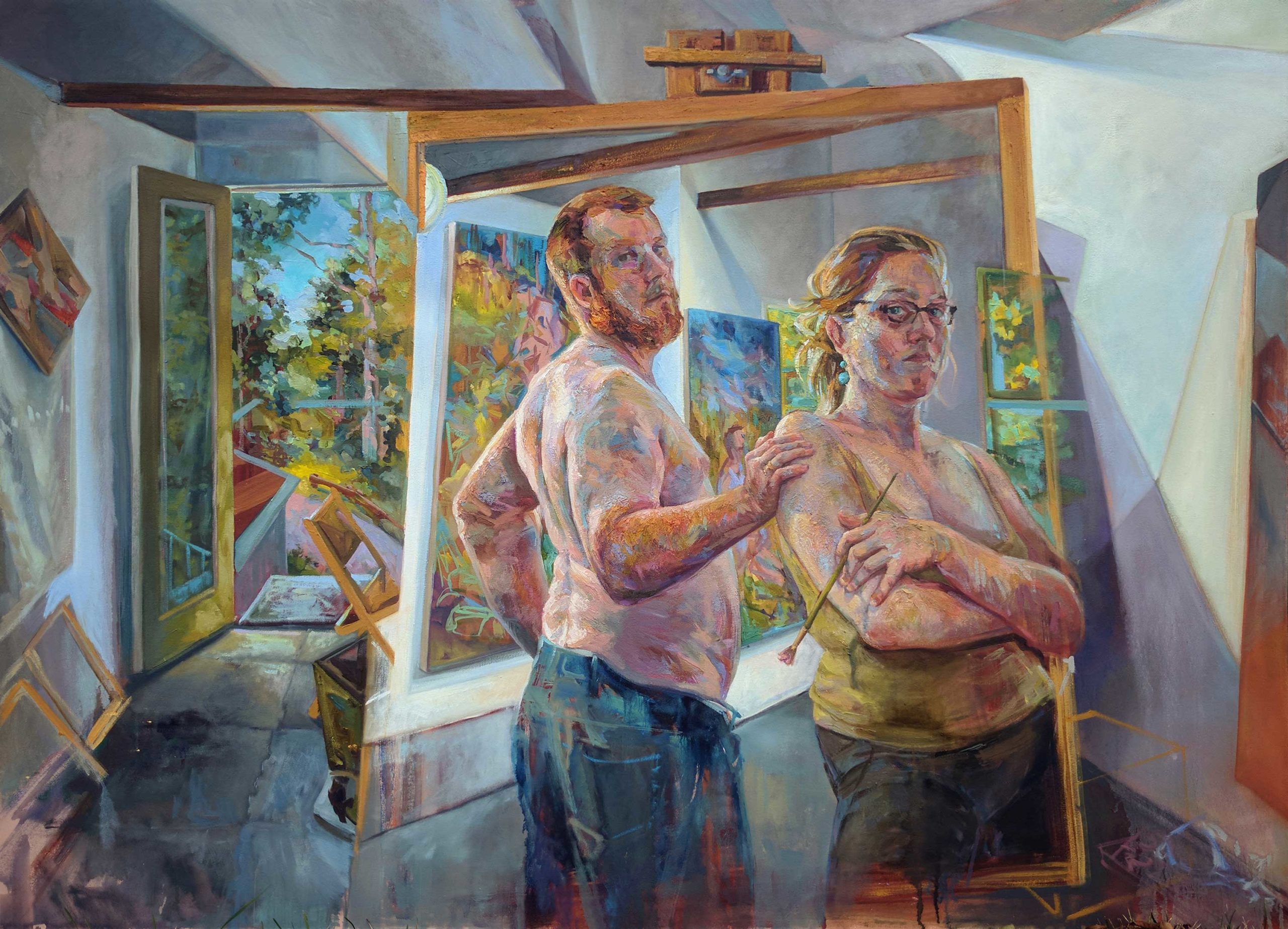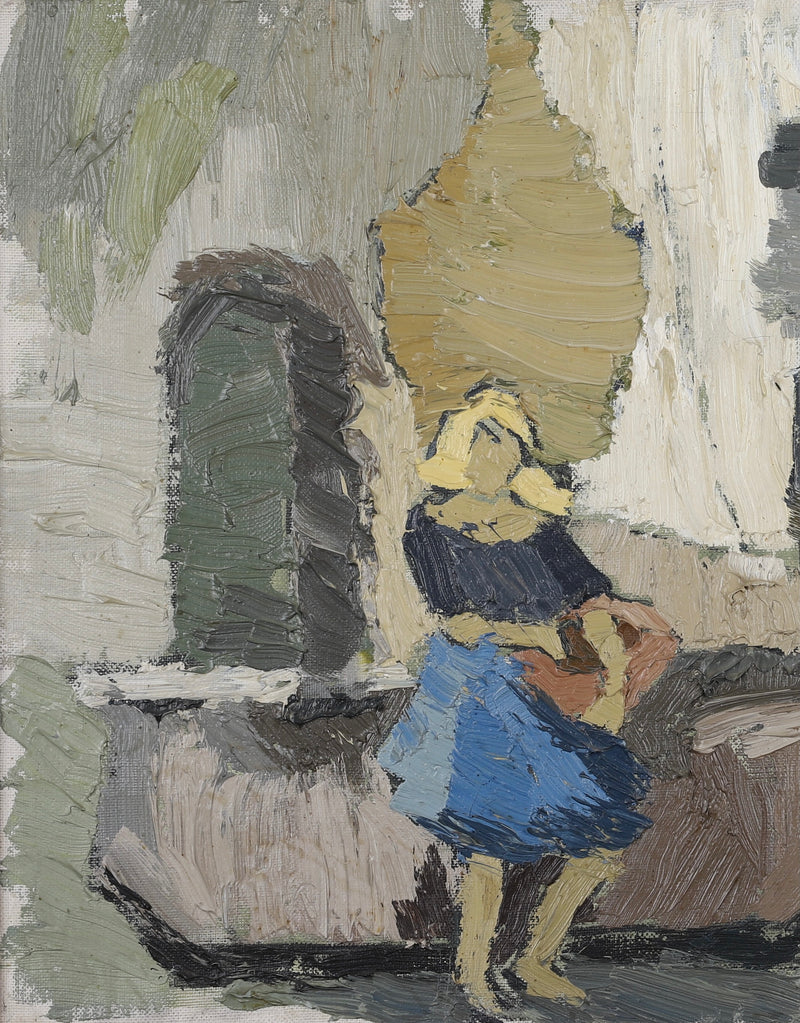A Journey With the World of Metaphorical Oil Painting: Discovering the Unique Features and Psychological Depth of the Tool

History of Figurative Oil Painting
Arising during the late Middle Ages and growing throughout the Renaissance, figurative oil painting has a rich history that reflects both imaginative technology and social advancement. Oil paints were used in Europe as a means to enhance the luminosity and deepness of shade in artworks. Artists such as Jan van Eyck originated the medium, demonstrating its possible to catch complex details and textures, thus permitting a more natural depiction of the human form.
As the Renaissance progressed, prominent numbers like Leonardo da Vinci and Michelangelo broadened the boundaries of metaphorical oil painting. They highlighted anatomical precision and viewpoint, developing works that shared feeling and narrative deepness. The medium's flexibility enabled for testing with light and darkness, resulting in the advancement of chiaroscuro techniques that better enhanced the aesthetic experience.
Special Qualities of the Medium
The advancement of metaphorical oil paint has been significantly affected by the distinct features of the medium itself. Oil paint, composed of pigments suspended in oil, supplies artists a remarkable adaptability that enables a wide variety of structures and coatings. Its slow drying time enables thorough blending and layering, which can develop depth and brightness unattainable in various other mediums.
Additionally, oil paint's abundant coloring offers vivid colors that preserve their strength over time. This characteristic is critical in figurative paint, where capturing the nuances of complexion and psychological expressions is paramount. The capability to accomplish soft transitions and subtle gradients improves the natural quality of subjects, enabling artists to convey complicated psychological states.
Additionally, oil paint adheres well to various surfaces, such as canvas, wood, and steel, widening the scope of creative expression. The medium's versatility supports different strategies, from comprehensive realistic look to expressive brushwork, enabling musicians to discover their specific designs.
Ultimately, the special residential or commercial properties of oil paint not just enrich the visual experience yet additionally equip musicians to interact profound narratives, making figurative oil painting a deeply expressive art form.
Styles and methods Used
Within the realm of figurative oil paint, musicians employ a varied variety of techniques and designs that add to the depth and richness of their job. One prominent technique is polishing, where transparent layers of paint are applied over dried out layers, permitting light to reflect and pass through, improving luminosity and deepness. This method is often used to attain a feeling of realism and intricacy in skin tones.
An additional method is impasto, where thick layers of paint are used with a combination knife or brush, developing a textured surface area that adds a three-dimensional quality to the painting. This design can evoke a natural action, drawing the visitor in through its responsive nature.
Artists likewise explore different brushwork designs, from penalty, comprehensive strokes that record elaborate attributes to broader, a lot more expressive strokes that communicate activity and feeling (figurative oil painting). The selection of color palette dramatically influences the general state of mind of a piece, with warm tones commonly giving sensations of comfort and great tones recommending melancholy
Additionally, the assimilation of chiaroscuro, the contrast in between light and shadow, enables musicians to develop dramatic impacts that improve the narrative top quality of their work. Each technique and design is carefully chosen to raise the visitor's experience and understanding.
Emotional Depth in Figurative Art
Emotional deepness works as a cornerstone in figurative art, enabling musicians to go beyond plain depiction and involve viewers on a profound degree. This psychological vibration is usually achieved through the nuanced portrayal of human figures, expressions, and interactions. Artists harness the power of shade, light, and darkness to evoke feelings that reverberate deeply with the target market, creating a natural link to the topic.
In figurative oil painting, the elaborate layering of paint can reflect the complexities of human emotion. The choice of palette, whether awesome or cozy, plays a critical duty in establishing the mood and ambience of an item. For example, softer colors might evoke serenity and self-questioning, while strong, contrasting colors can connect tension and drama.

Influential Artists and Their Works
Countless influential musicians have actually considerably formed the landscape of figurative oil painting, each adding unique point of views and strategies that remain to influence modern creators. Among these musicians, Lucian Freud attracts attention for his intense mental deepness and raw representation of the human kind, usually blurring the lines between elegance and degeneration. Freud's works, defined by thick, impasto brushstrokes, welcome visitors to confront the complexities of identification and susceptability.

Similarly, Andrew Wyeth's precise realism in pieces like "Christina's Globe" records extensive narratives within seemingly easy structures. His use light and shadow stimulates a feeling of nostalgia and emotional vibration, attracting customers right into the intimate globes he depicts.
In the realm of modern-day art, Kehinde Wiley has actually gotten recognition for his vibrant, epic pictures that challenge typical ideas of representation. By placing individuals of shade in contexts similar to classic portraiture, Wiley's job redefines the canon of art history.
These artists, alongside others, have not just enriched figurative oil paint however have additionally broadened the dialogue surrounding culture, identification, and feeling, guaranteeing that the medium continues i loved this to be a vital kind of expression in the art world. figurative oil painting.
Verdict
Finally, figurative oil paint continues to be a powerful tool that encapsulates the complexities of human feeling with its abundant coloring and flexible techniques. The historical advancement navigate here of this art type, integrated with its unique attributes, permits profound creative expression. Strategies such as glazing and impasto enhance the emotional resonance of each item, while the contributions of significant musicians remain to shape the discourse and influence surrounding this classic genre. The journey through figurative oil painting discloses its enduring relevance in the art world.
The exploration of figurative oil painting provides a profound insight into the interplay of technique, feeling, and historical context that defines this venerable medium. Oil paint, made up of pigments put on hold in oil, provides musicians an amazing adaptability that permits for a vast range of coatings and appearances.Within the realm of figurative oil painting, musicians utilize a varied array of methods and designs that add to the deepness and richness of their work.Numerous influential click this musicians have substantially shaped the landscape of figurative oil paint, each adding unique perspectives and methods that continue to inspire modern developers.In verdict, figurative oil paint continues to be an effective tool that encapsulates the complexities of human emotion through its abundant coloring and flexible methods.
Comments on “The Evolution of Art: A Comprehensive Overview to Figurative Oil Painting”